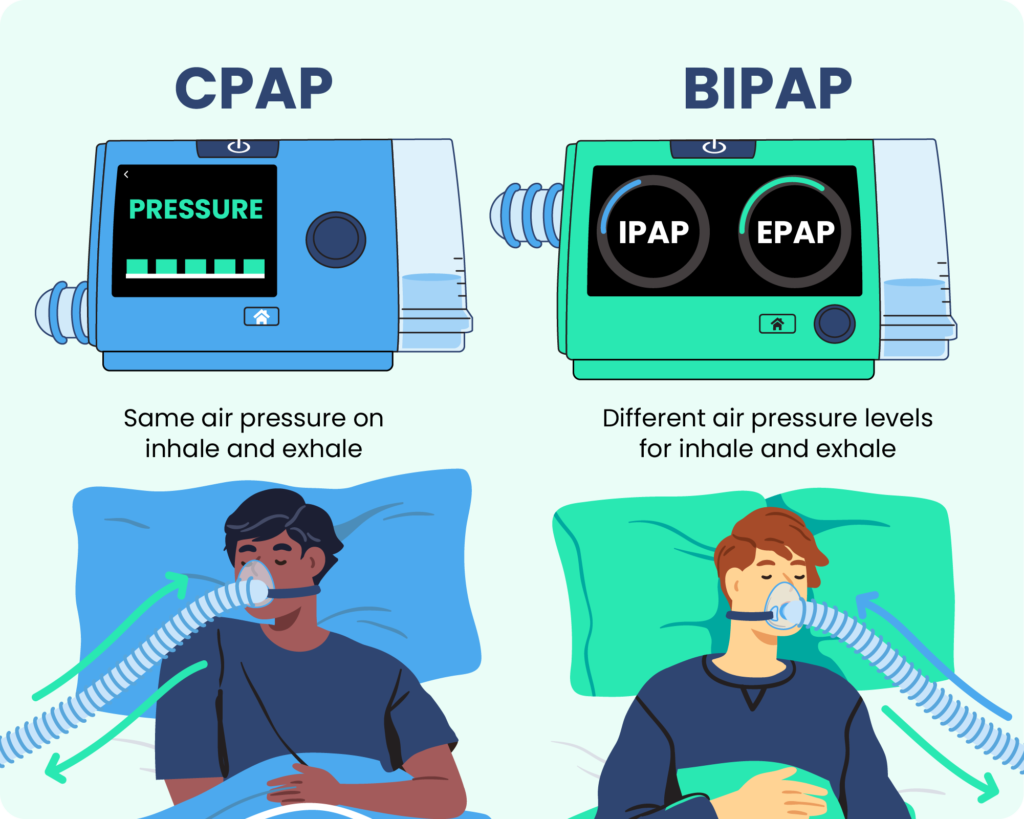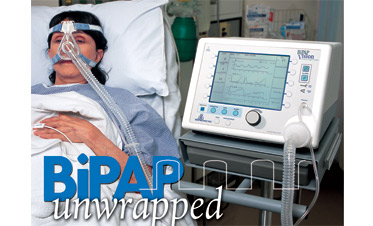Explore Flexible BiPAP Rental Options for Home Treatment
Explore Flexible BiPAP Rental Options for Home Treatment
Blog Article
Bipap vs. CPAP: Which Is the Finest for Your Sleep Problem?
When browsing the complexities of rest disorders, the option in between BiPAP and CPAP therapy is an important consideration. Each technique offers distinct benefits customized to particular problems, yet the decision pivots on private patient demands and comfort levels. While CPAP offers a constant air movement appropriate for obstructive sleep apnea, BiPAP's dual pressure setups may improve comfort for those with even more intricate respiratory issues. Recognizing these differences can substantially affect therapy effectiveness, leaving one to ponder which alternative truly straightens with their wellness demands and way of life.
Understanding Rest Disorders
Sleep disorders incorporate a variety of problems that interfere with typical rest patterns, impacting both the top quality and period of rest. These problems can materialize in different kinds, including sleep problems, sleep apnea, narcolepsy, troubled leg syndrome, and parasomnias. Each problem presents special challenges, often bring about considerable daytime tiredness, cognitive disability, and emotional disturbances.
Sleep problems is defined by trouble falling or staying asleep, while rest apnea entails repeated disturbances in breathing during sleep, usually resulting in fragmented remainder. Narcolepsy, on the various other hand, is marked by excessive daytime sleepiness and sudden rest attacks. Uneasy leg disorder causes uneasy feelings in the legs, motivating an uncontrollable desire to move them, which can additionally hinder the capacity to drop asleep.
The impact of sleep problems expands beyond individual health, affecting overall productivity, connections, and top quality of life. Recognizing the specific nature of each disorder is critical for effective diagnosis and therapy. As sleep health and wellness comes to be progressively identified as an important component of total wellness, attending to these disorders is necessary for improving both rest quality and daily performance.
How CPAP Functions
Constant Favorable Respiratory Tract Stress (CPAP) treatment is frequently used as a main treatment for obstructive rest apnea (OSA) The mechanism of CPAP includes making use of a machine that provides a stable stream of air via a mask worn throughout rest. This air flow preserves positive stress in the airway, protecting against the collapse or blockage of the throat that can occur during rest.
When an individual takes in, the CPAP maker gives a continuous circulation of air, making sure that the respiratory tract remains open - BiPAP Rental. This not just relieves the symptoms of OSA, such as snoring and interrupted rest patterns, however likewise decreases the associated wellness dangers, consisting of cardio complications and daytime tiredness
The stress setups on a CPAP device can be customized to satisfy private person needs, commonly established through a sleep research. In general, CPAP therapy has been revealed to substantially improve the high quality of sleep and total health for individuals enduring from obstructive rest apnea.
How BiPAP Functions
BiPAP, or Bilevel Favorable Airway Stress, is a specialized kind of non-invasive ventilation that is particularly valuable for clients with conditions such as complicated sleep apnea or respiratory conditions. Unlike CPAP, site web which delivers a continuous stream of air at a solitary stress, BiPAP provides two distinctive pressure settings: a higher inspiratory pressure for inhalation and a lower expiratory stress for exhalation. This dual-pressure strategy enables simpler breathing, lowering the effort called for during exhalation.
The tool operates via a mask fitted learn the facts here now over the nose or mouth, attached to an equipment that produces air pressure. When the patient breathes in, the machine supplies the greater pressure to help with air flow, making certain that the respiratory tract stays open. Upon exhalation, the maker automatically reduces the stress, making it extra comfy for the client to breathe out.

Trick Differences In Between BiPAP and CPAP

In comparison, BiPAP (Bilevel Positive Respiratory tract Stress) provides 2 different stress setups: one for inhalation and a lower one for exhalation. This double pressure system allows for more comfortable breathing, specifically for clients that have problem with breathing out versus a continuous pressure. BiPAP is typically recommended for clients with complicated rest apnea, persistent obstructive pulmonary condition (COPD), or those that require extra support throughout sleep.
Additionally, the intricacy of BiPAP tools generally leads to a greater price and requires more cautious titration than CPAP. BiPAP Rental. Comprehending these key differences can help in acknowledging which tool might be preferable for certain rest problems, establishing the foundation for enlightened therapy choices
Picking the Right Treatment
How try these out can one identify the most suitable therapy for managing sleep disorders? The choice in between BiPAP and CPAP treatment largely hinges on the specific features of the rest condition, the person's total wellness, and their convenience with the gadget. CPAP, which provides a constant stream of air, is frequently recommended for obstructive sleep apnea (OSA) It maintains an open airway during sleep, properly preventing hypopneas and apneas.
On the other hand, BiPAP provides 2 degrees of pressure: one for breathing and a lower one for exhalation. This twin stress system is helpful for clients with complex rest apnea or those who experience difficulty breathing out against a continual pressure. In addition, BiPAP is usually suggested for people with breathing conditions, such as persistent obstructive lung disease (COPD), where differing pressure settings can boost convenience and compliance.
Eventually, a complete assessment by a sleep expert, consisting of a rest research study, can help determine which treatment straightens finest with the patient's requirements. Elements such as comfort, ease of use, and certain medical conditions must likewise be taken into account to optimize therapy outcomes.
Conclusion
In summary, both BiPAP and CPAP serve distinct functions in the management of sleep disorders. CPAP works for obstructive sleep apnea via constant air movement, while BiPAP supplies dual stress settings that improve convenience for those with complex rest apnea or breathing problems. The selection between these treatments need to be assisted by individual requirements and problems, necessitating a thorough evaluation by a rest professional to ensure optimum treatment outcomes and boosted quality of rest.

Generally, CPAP therapy has been revealed to considerably improve the high quality of sleep and total health and wellness for people experiencing from obstructive sleep apnea.
BiPAP is frequently suggested for people with complex rest apnea, persistent obstructive lung illness (COPD), or those who need additional support throughout sleep.
CPAP is reliable for obstructive sleep apnea with regular airflow, while BiPAP supplies double stress setups that improve convenience for those with intricate rest apnea or respiratory system issues.
Report this page